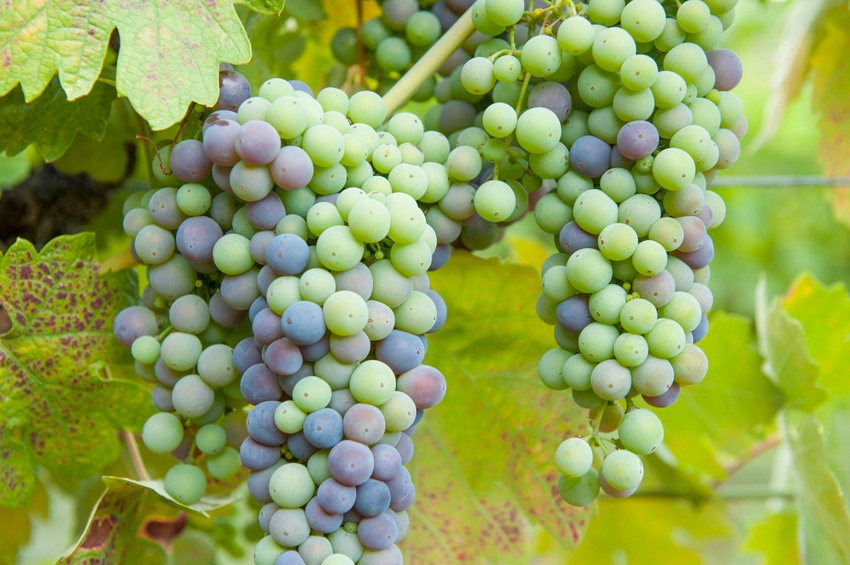
“It looks like a good quality crop,” veteran Central Coast grower Dana Merrill said of his wine grape harvest at mid-September. “Tonnage-wise, it’s about average, and within earlier estimates
His company, Mesa Vineyard Management, based at Templeton, Calif., owns and manages several thousand acres of vineyards in Santa Barbara, San Luis Obispo, and Monterey counties.
His crews started harvesting in the Paso Robles area, picking Grenache and Syrah for rosé wines, before moving onto white Rhones, like Viognier and Roussanne, and Pinot Noir. By mid-September, nearing the harvest halfway, the crews were winding up Pinot Noir and medium-maturity reds, such as Merlot, Syrah, and Zinfandel, and starting on Chardonnay.
They’ll finish the harvest with Cabernet Sauvignon and Petit Syrah. Depending on how quickly sugars reach desired ºBrix readings, that could be anywhere from the middle to end of October.
In early September, sugar development was racing under the impact of an unusually intense heat wave. “Some of the sugars got pretty high,” Merrill says. “Everyone was picking at the same time, which made it hard on the capacities of wineries to handle the volume.”
The heat caused some shriveling in the vineyards in the Santa Maria Valley of southern San Luis Obispo County and northern Santa Barba County, he says. Not long after the heat wave ended, several of his ranches in the area received about an inch of rain from a single downpour, causing some Botrytis bunch rot to develop in limited areas of the vineyards. By mid-September, weather had cooled considerably, and the customary morning fogs had returned.
Despite hearing that some area growers were having difficulty getting workers to hand-pick the grapes, harvest labor overall appeared to be more available here than elsewhere, Merrill says. “Growers here are coping with the labor situation pretty well, compared to what I’ve read about worker shortages in the North Coast. Our company does a lot of machine picking, and that has helped us a lot in dealing with the declining labor supply.
“A pretty good percentage of the growers and wineries we work with are happy with grapes that are machine harvested. Even those who produce grapes for the high end wine market are becoming more open-minded about the benefits of machine harvesting, and the newer equipment features, like de-stemmers.
“Growers are getting the message,” Merrill says, “that they need to include more mechanization in their vineyards, because they likely won’t be able to find all the labor they want in the years ahead. Also, machines can be operated in really hot weather, when heat safety regulations would limit hand-picking.”
The market for this year’s grape crop, has generally been strong, except for some weakness in demand for Merlot and Zinfandel, he says.
“The wineries have signed up the grapes they needed,” Merrill says. “So, they’re probably pretty full for this year’s harvest. However, some could probably squeeze in a few more tons of the most popular varieties, like Cabernet Sauvignon and Pinot Noir, as well as Sauvignon Blanc, which is back in fashion.”
About the Author(s)
You May Also Like




